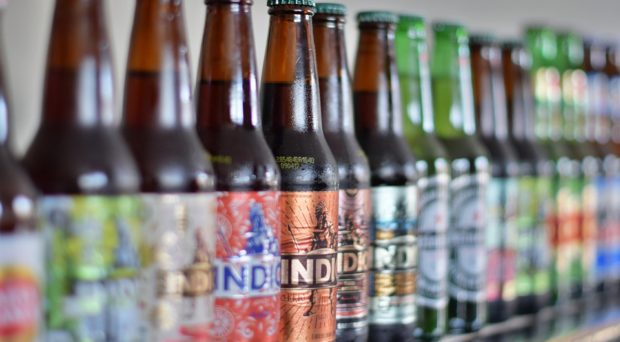
As part of the public health responsibility deal in 2011, alcoholic beverages companies in the UK made a series of pledges to help foster a culture of responsible drinking. One of these pledges was to ensure that 80% of drink containers include labels detailing alcohol content, daily intake guidance and warning against drinking during pregnancy.
Whilst these pledges may be well intentioned, their actual effectiveness has been called into question. Researchers argue that the most effective strategies to reduce alcohol related injury are not consistently reflected in the pledges and that labeling is generally ineffective in modifying consumer behaviors.
The effects of labeling on alcohol is an area that is poorly understand in general. For instance, there is considerable uncertainty over whether the labeling of lower strength alcohol products reduces alcohol consumption, with consumers purchasing these drinks over higher strength counterparts, or whether it in fact encourages higher consumption due to ‘self-licensing’. This was investigated in a systematic review published in BMC Public Health. It found there was low quality evidence suggesting consumers’ perceptions of products could be shifted by low alcohol labeling but there was still considerable uncertainty over what the effects might be.
Consumers looking at advertisements for alcohol only spent an average of 7% of viewing time on warning messages
The apparent ineffectiveness of warning labels on alcohol products has been explored in another recent study published in BMC Public Health. Here the authors theorized that the limited effect of warning labels may be due to consumers paying little attention to them. It has previously been shown that consumers looking at advertisements for alcohol only spent an average of 7% of viewing time on warning messages. Increasing attention to warning to warning labels may then be the key to increasing their effectiveness. This has been shown in bar visitors who drank less alcohol when their attention was drawn to warning labels.
To find out if warning labels could impact alcohol consumption on a population level, if they were made sufficiently attention grabbing, the authors devised two studies that investigated how much attention is paid to warning labels and how individual differences in drinking behaviors are associated with attention to warning labels.
The study
The authors recruited students at the University of Liverpool. In the first study, 60 participants were asked to view images of beverage containers on a screen whilst their eye movements were tracked. Students were told to pay close attention as their memories of the containers would be tested.
In the second study the viewing phase was proceeded by either an alcohol intervention talk to manipulate participants (120) drinking motivations or a control intervention giving study advice. The researchers also manipulated attention to alcohol packaging using brightly drawn borders on either the warning label or the branding. The participants then completed a questionnaire to asses motivations to drink in the following week.
Although the alcohol intervention talk reduced attention to branding it did not increase attention to warning labels.
Results of the study showed that although the alcohol intervention talk reduced attention to branding it did not increase attention to warning labels or influence motivations to reduce drinking. Study participants who viewed containers with highlighted health warnings did fixate longer on these however this did not affect drinking intentions.
The researchers propose that a possible reason that participants did not particularly notice the warning labels is because they only occupy 5% of the packaging. This is supported by research on warning labels in tobacco adverts which found that message recall was increased with larger labels. Other reasons could be that current warning labels do not show the consequences of exceeding the recommended intake and features of the labels like the “drink responsibly” message are associated with promoting the drink and therefore seen as part of the branding.
In order to make alcohol warning labels more effective, the researchers call for further studies exploring the effects of label design and content on consumers’ attention to them. They also suggest that increasing the noticeability of warning labels could be achieved through plain packaging, graphic warnings and front of pack labeling which have all been shown to be effective in food and tobacco research.
Comments